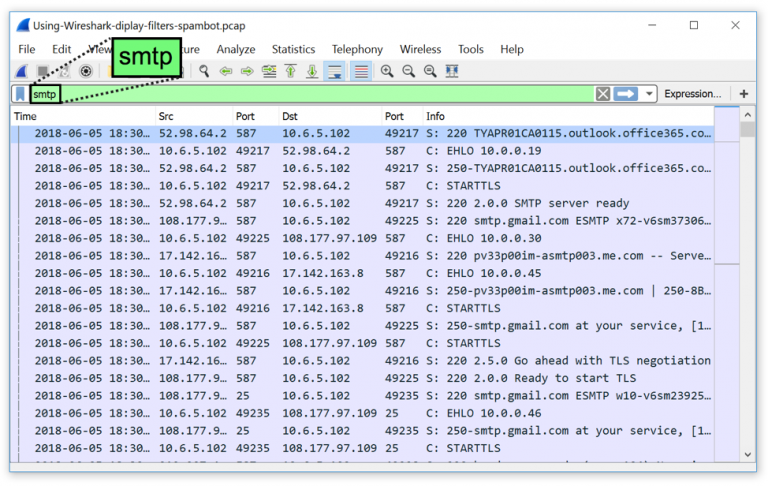

- #Wireshark filters examples sip how to#
- #Wireshark filters examples sip full#
- #Wireshark filters examples sip mac#
Wireshark displays every packet related to the entered protocol that is inside your current capture filter. Enter the protocol’s name and click the “Apply” button.This is the textbox next to the word “Filter.” Click the display filter toolbar at the top of the screen.Follow these steps for a simple protocol display filter. It’s possible to use a variety of operators to create more complex filters, assuming you have an in-depth understanding of Wireshark. The following steps allow you to display a simple protocol. There are two ways to use the display filter on a Mac.
#Wireshark filters examples sip mac#
Wireshark on a Mac allows you to use a display filter to show packets based on an array of options and expressions, including protocols, field comparisons, field values, and more.
#Wireshark filters examples sip how to#
How to Use Display Filter in Wireshark on a Mac The syntax for your choice is automatically entered into the display filter toolbar. Right-click one of the addresses and select “Apply as Filter.”


This method is a way to apply a filter that doesn’t require you to type directly into the display filter toolbar. This is located to the right of the display filter toolbar. If you wish to remove your applied filter, click the Clear button. It displays packets relevant to the filter you apply. A display filter does not alter the content within a capture file. All of these packets remain inside their associated capture file. You should now see Wireshark displaying packets based on the filter you chose. Alternatively, you can click “Apply” after entering your filter expression. Press “Enter” to apply your chosen filter.For example, type “tcp” if you want to display all of your TCP packets. Enter the protocol’s name into the toolbar.Locate and click on the display filter toolbar in Wireshark.1 – Direct Filter TypingĪssuming you simply want to display a protocol, follow these steps. I would need it:ġ: To capture all of the packets for each callĢ: Display dual channels so I can visually see the call while listening to it,ģ: Show me a graph of the call so that I can see where the call was initiated and ended.There are two methods for using the display filter in Wireshark on a Windows PC. As it stands, we spend about a half hour per person (per customer) each day. If we can streamline the process and make it a faster process, that would be great. We normally use Wireshark to monitor various customers as issues arises, and common tasks are as follows:ġ: If the phone company has been stripping out the DTMF tones.Ģ: To see when/if/why/how our application is starting its automated recording before a customer has answered their phone.ģ: To monitor calls so we can see if our application or the phone company is hanging up on customers. As we need to dissect a call and see if the issue is on my companies side or the phone companies side.
#Wireshark filters examples sip full#
While I am looking to record calls, I also need the ability to to see the full process of the call starting/ending.


 0 kommentar(er)
0 kommentar(er)
